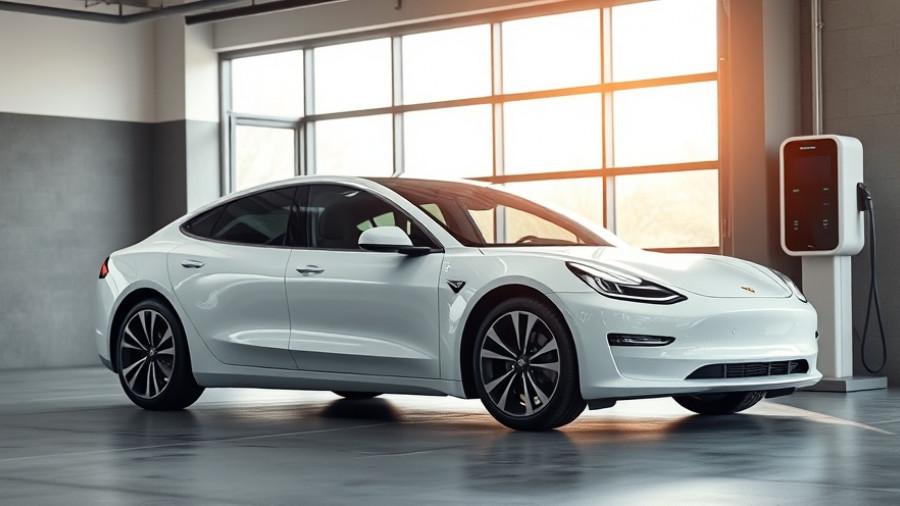
A Glimpse Back: GM's Forgotten Electric Concept of 1969
In an era where electric vehicles (EVs) are fast becoming the norm rather than the exception, it’s fascinating to rediscover the pioneering concepts of the past. General Motors (GM), a giant in the automotive industry, nearly launched a miniature electric vehicle in 1969 that could have changed the trajectory of modern transportation earlier than many assume. The XP 512E was more than just a forgotten relic; it signified GM's early vision of electrification.
Specifications That Were Ahead of Their Time
The XP 512E made its debut at the 'Progress of Power' exhibit in May 1969, boasting a compact design that highlighted its futuristic approach. With a modest wheelbase of 52 inches and weighing around 567 kilos, this electric runabout might not match today’s standards for performance, but it was genuinely innovative at the time. Equipped with an 84-volt lead-acid battery, the vehicle’s ability to travel up to 58 miles at a top speed of 30 mph illustrated GM's early commitment to green technology.
Revisiting Electric Vehicle Pioneers
This small electric city car was not GM's only venture into electrification. The EV1, released in 1996, is often heralded as one of the first mass-produced electric vehicles. Following that was the Chevrolet Volt in 2010, which became America's first commercially available plug-in hybrid. These models set the stage for understanding the modern electric vehicle market. The XP 512E serves as an important historical artifact symbolizing GM’s struggles and successes in adapting to the electrification movement.
Design Features that Were Innovative for Their Time
The XP 512E was designed with a unique scooter-style soft top and a low-access door that provided easy entry for passengers. With bench seating for two and amenities such as a heater and defrost, these features reflect an early understanding of user comfort and convenience. The vehicle's capacity to be transformed into a small electric roadster introduced a sense of versatility that resonates today as automakers seek to combine aesthetics with ecological responsibility.
Comparisons to Modern Electric Vehicles
When juxtaposed with contemporary electric vehicles, the XP 512E’s limited range and acceleration may seem rudimentary. However, it is crucial to recognize the innovation it represented within the context of its time. Modern EVs now offer advanced battery technology enabling longer ranges and quicker charge times. Nevertheless, those looking into green energy solutions, including homeowners and businesses, can draw inspiration from the XP 512E and the evolution of vehicle technology to understand why investing in electric solutions is essential.
The Current Landscape of Green Energy Transportation
Today, the call for sustainable solutions is louder than ever. Interest in electric vehicles has been significantly spurred by advancements in solar energy and battery storage that support grid independence and minimize carbon footprints. Homeowners are increasingly investing in solar-powered EV charging stations, making the integration of renewable energy sources into daily life more attainable. Initiatives promoting the utilization of electric vehicles in urban settings align closely with GM's original vision embodied by the XP 512E.
Looking Ahead: The Future of Electric Vehicles
Although the XP 512E never went into production, its intended innovation can’t be overlooked. The legacy of embracing electric drives is now an integral part of the automotive manufacturing narrative. As technology progresses, so too will the push for electric innovations that align better with personal green energy solutions. How can you integrate the electric vehicle trend into your lifestyle or business model? Now is an excellent time to explore eco-friendly transportation solutions and embrace the shift to sustainable energy.
Understanding GM's past efforts in EV production invites crucial reflections on how developers can continue innovating towards a more sustainable future.Translating this knowledge to modern developments, homeowners and businesses invested in green technology can consider how electric vehicles like the XP 512E not only represent a significant chapter in automotive history but serve as a catalyst for an exciting sustainable future.
 Add Row
Add Row  Add
Add 



Write A Comment